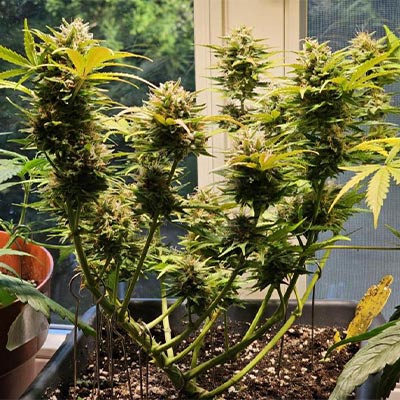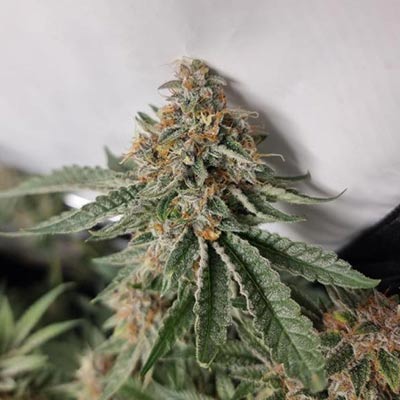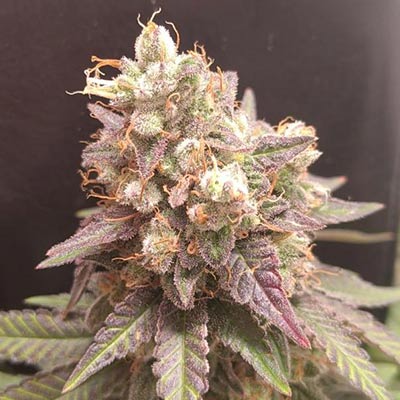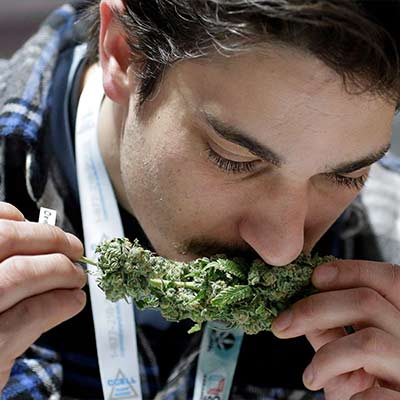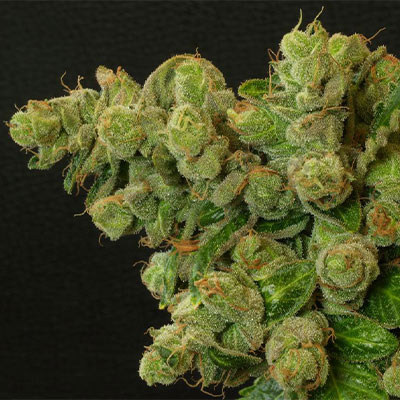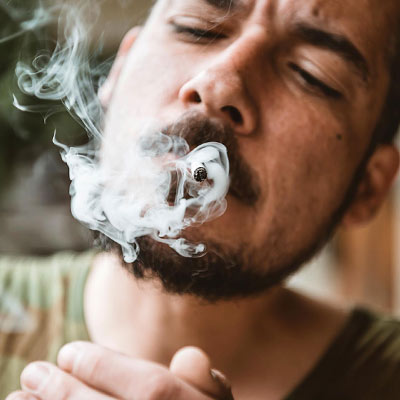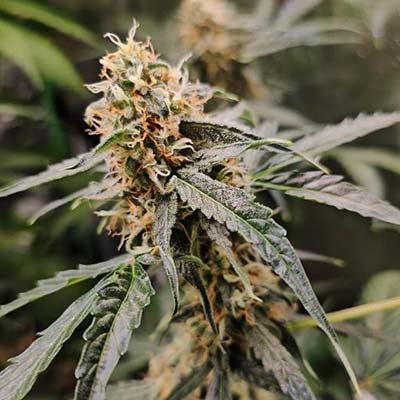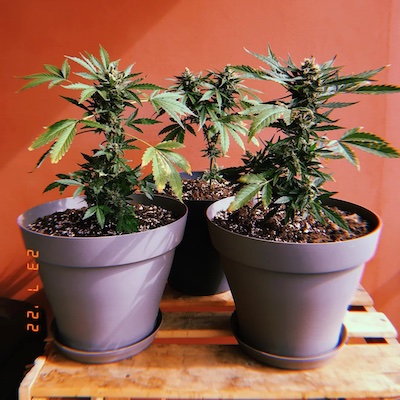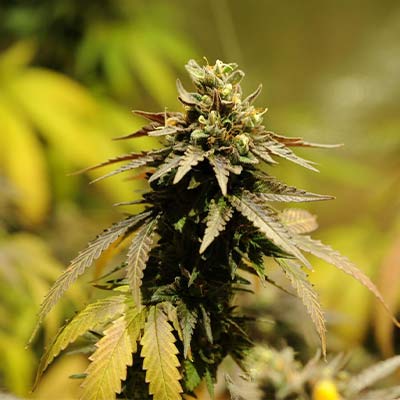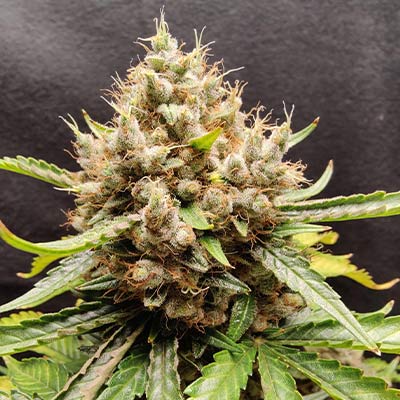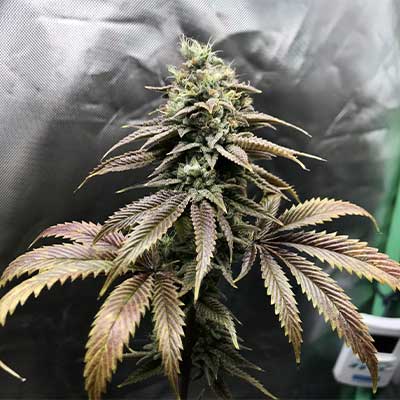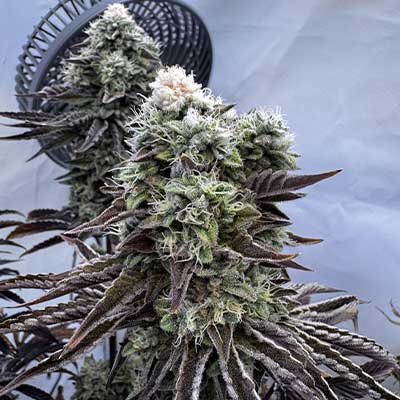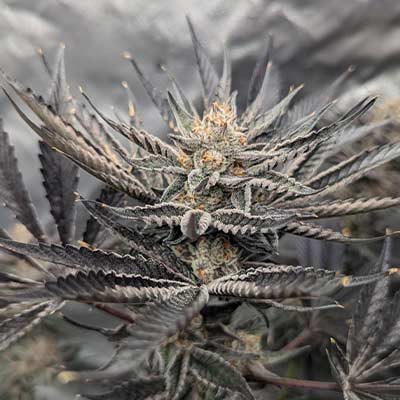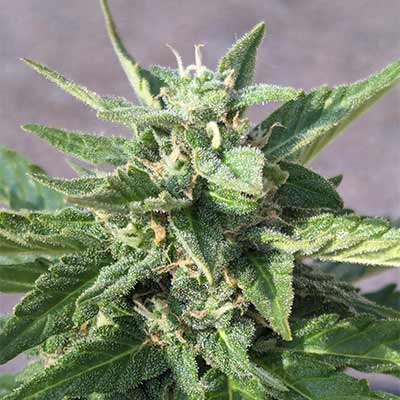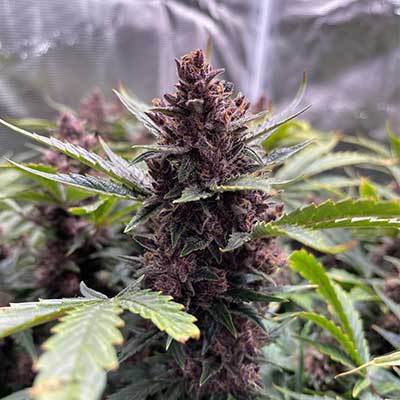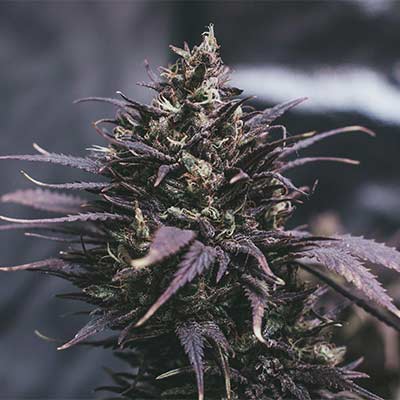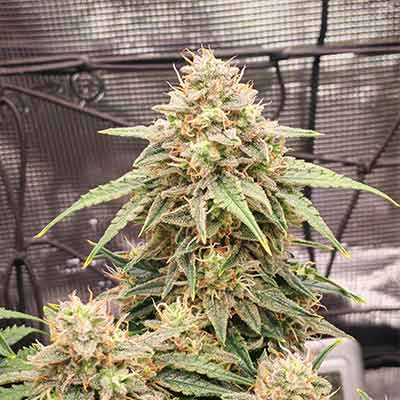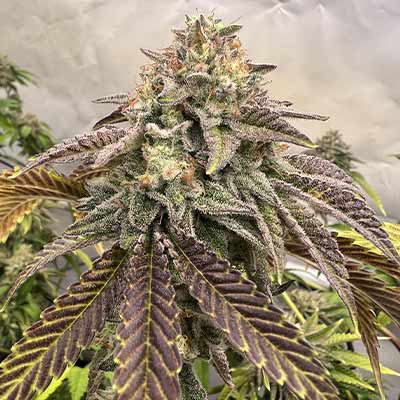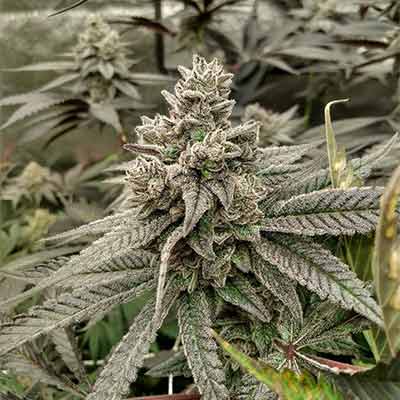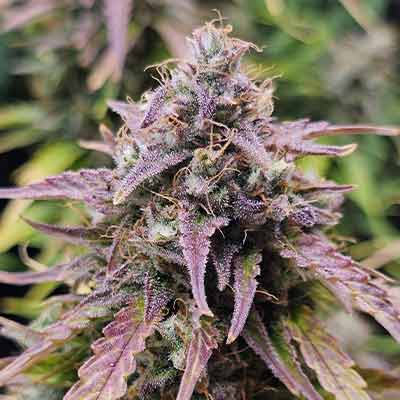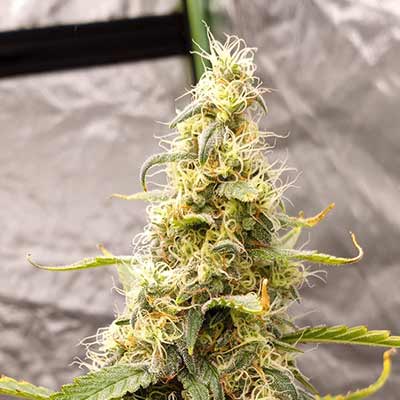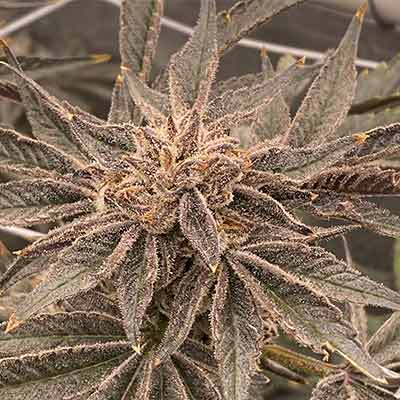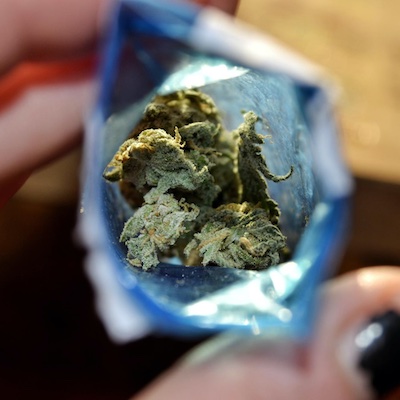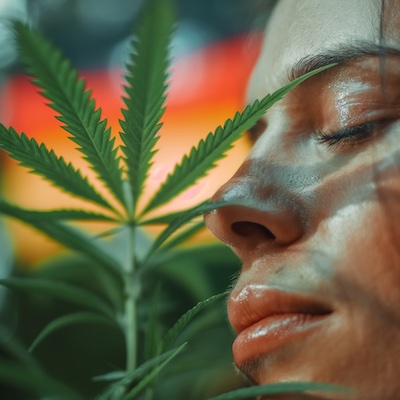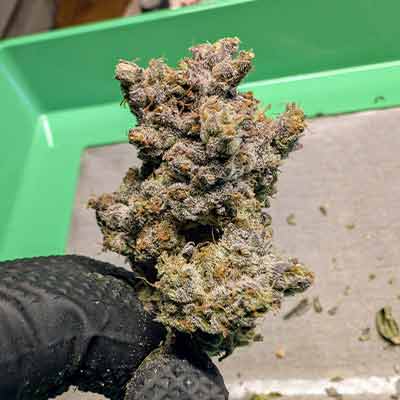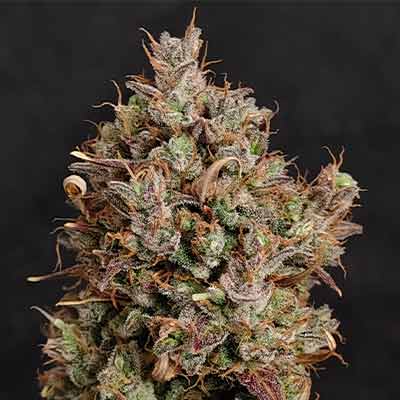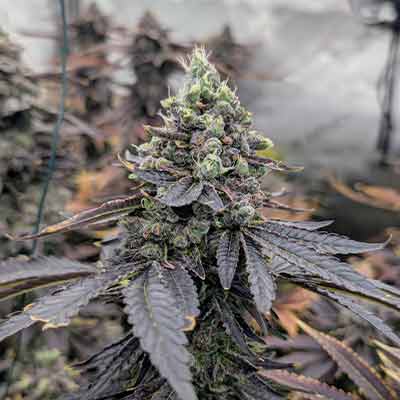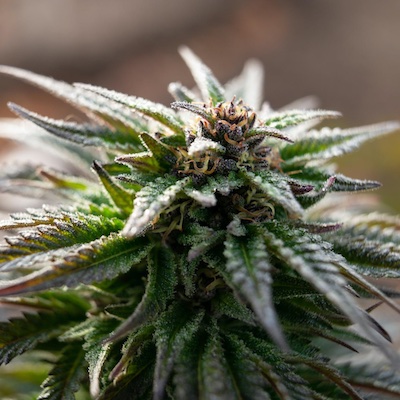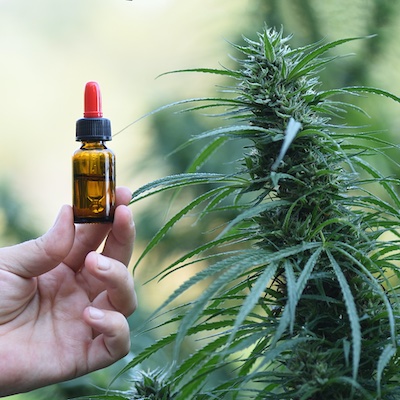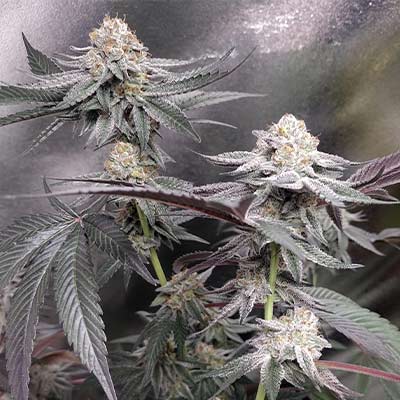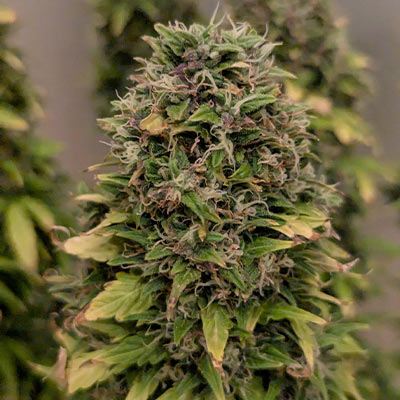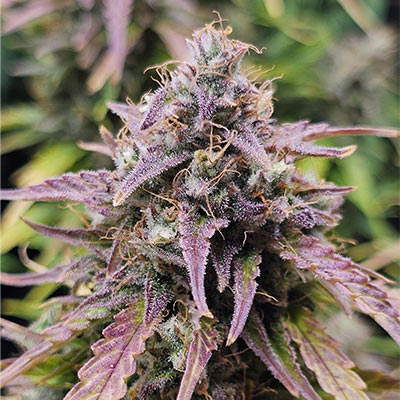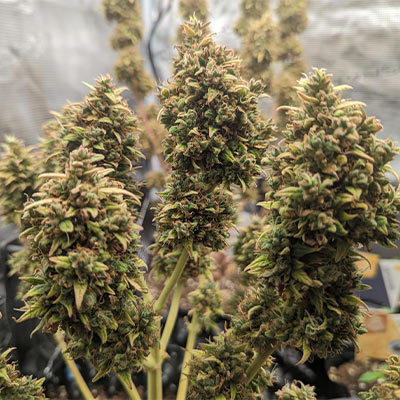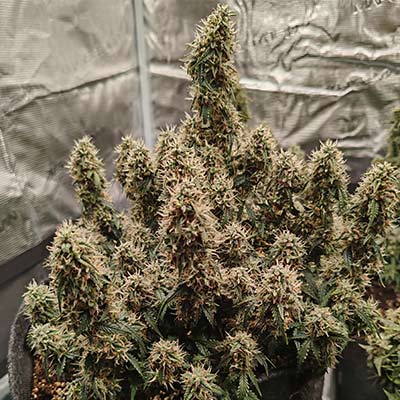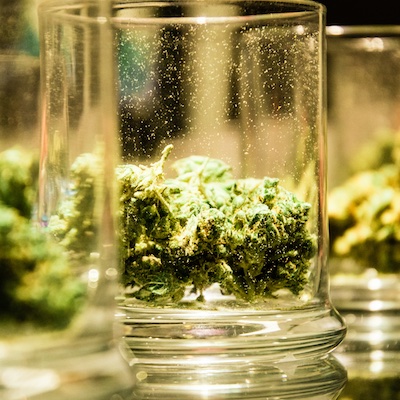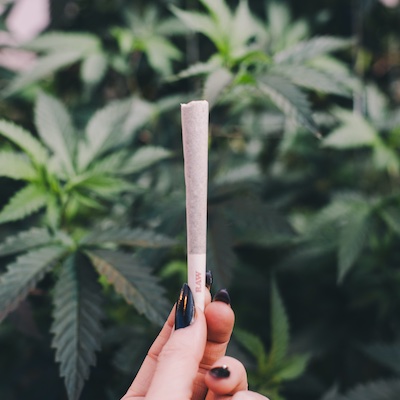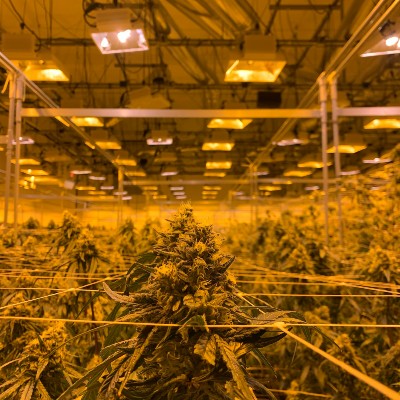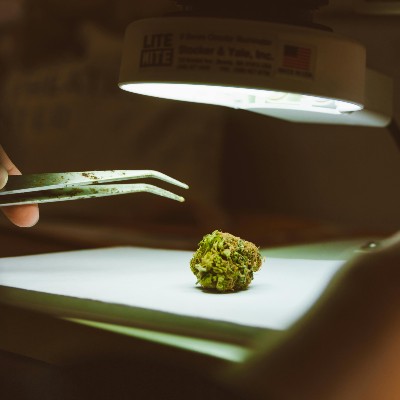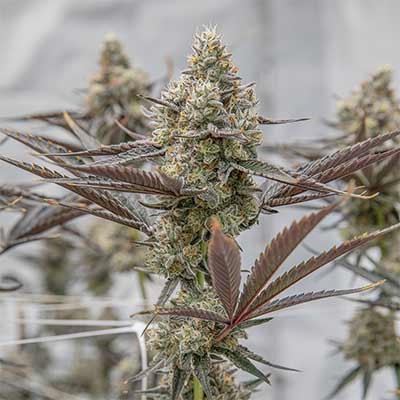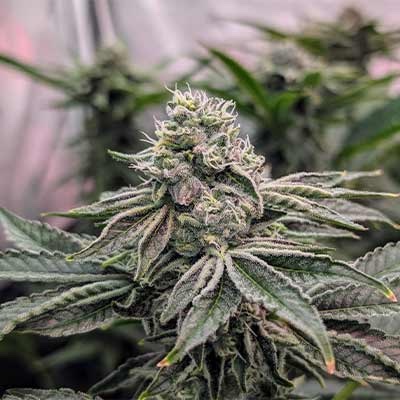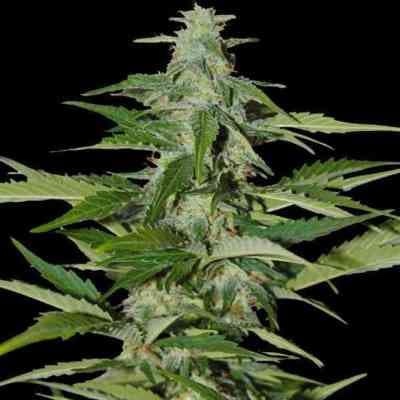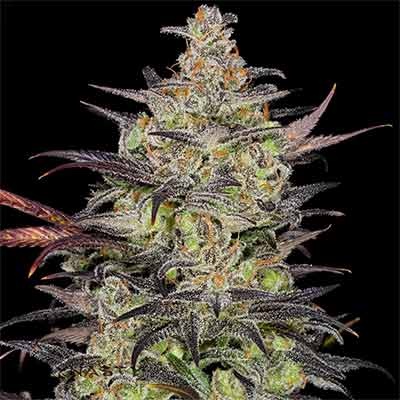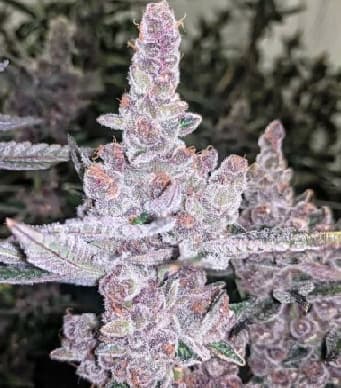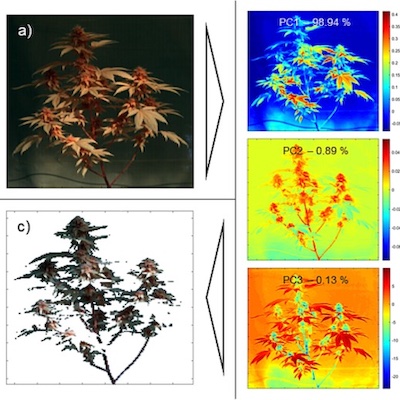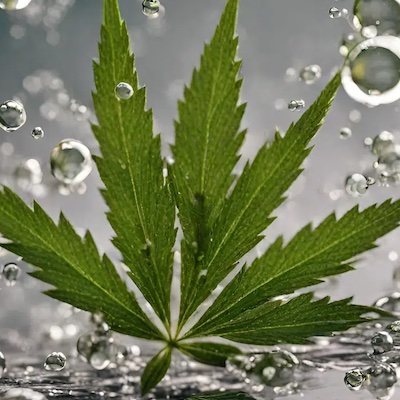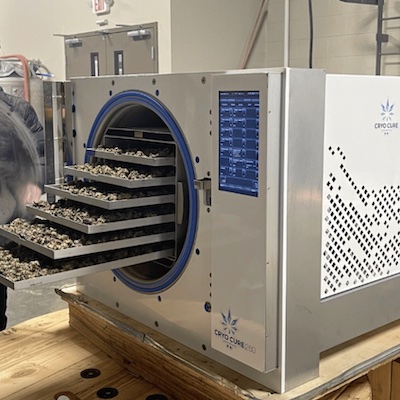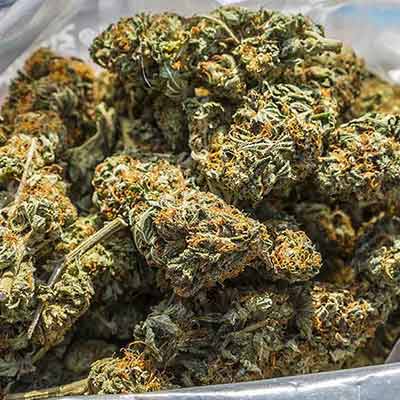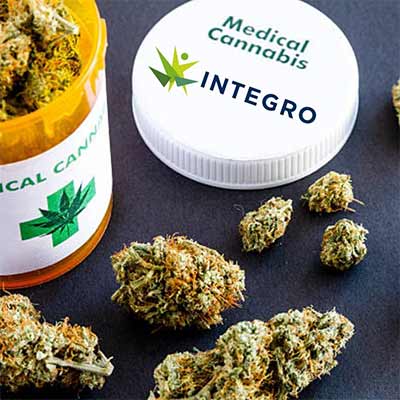BackCannabis news

Feminized Cannabis Seeds – The Queens of Your Grow
Feminized cannabis seeds are the foundation for reliable, predictable harvests. Here’s why they’re so popular — and how they help you as a grower.
- 100% female plants • predictable harvests
- Proven germination rates & hand-picked genetics
- Fast shipping & fair pricing
Sometimes it all starts with a simple moment: you unzip the tent, air’s mild, lights aren’t even at full blast yet — and still the tips of your plants sparkle like they already know where this run is headed. Once you’ve seen how reliably feminized cannabis seeds pack on compact, resinous buds, it’s clear why so many growers call them the “queens.” This guide walks you from first soak to final trim — practical, story-driven, no myths — just experience, structure, and concrete recommendations. Prefer to jump straight in? Here’s the feminized seeds category.
What “Feminized” Means — and Why It Matters
Feminized marijuana seeds are bred to produce almost exclusively female plants. For your grow, that means no time or space wasted on males, no selection stress in pre-flower, and — most importantly — predictable harvests. If you want to squeeze maximum value from every square foot, you’ll end up with feminized seeds sooner or later. Indoors — where every liter of media and every centimeter of light distance matters — that predictability really pays off.
The Big Three — Efficiency, Consistency, Quality
Efficiency: Every pot can produce. No “blind spots” from male plants, no wasted nutrients, no extra transplant cycles, no dead space.
Consistency: Strain purity and repeatable results. If a run works once, the next one’s rarely a fluke — feminized genetics deliver stability.
Quality: Energy goes into flowers, not pollen. Expect dense, compact buds with expressive terpene profiles — exactly what you want in the jar.
From Sprout to Queen — A Practical, Narrated Workflow
You start with a fresh feminized seed. In a moist starter (e.g., Jiffy pellet or lightly pre-pressed soil), the taproot pops in 24–96 hours. Move it gently into a starter container. The first seven days are the “setup window”: enough light (no full throttle yet), steady temps around 75–77 °F (24–25 °C), and a soft breeze to toughen stems. By day 10–14, first side branches show. That’s a great time to start LST: a tiny bend here, a soft tie there — and your canopy evens out. In pre-flower (first pistils showing) the plant’s already decided: she’s female and dedicates her energy to future colas.
Indoor vs. Outdoor — Putting Feminized Seeds to Work
Indoor: Control is power. Photoperiod feminized strains respond precisely to your 12/12 flip. You steer height via light intensity, veg duration, pot volume, and training; you stabilize VPD, airflow, and temperature — and you get predictable, repeatable results.
Outdoor: Sunlight is your ally. In warm locations, feminized strains can get big — with good timing (pre-veg, moving outside at the right moment, shelter from heavy rain), your plants become living sculptures by late summer. What matters: site (full sun), soil (free-draining, nutrient-rich), and watering that’s more “deep and less frequent” than “tiny sips all the time.”
Terpenes Tell Stories — Aromas That Stay in the Jar
Feminized weed seeds aren’t just yield machines — they’re aroma libraries. Limonene reads like citrus zest, myrcene like earth and ripe fruit, caryophyllene like warm spice. If you’re patient with dry and cure (slow drying at ~59–64 °F / 15–18 °C and ~55–60% RH, followed by a careful cure), you’ll be rewarded with a bouquet that lasts for months.
More Yield with Feminized Seeds — 7 Levers That Actually Work
- Light quality & spread: Even PPFD; avoid hotspots. Start dimmed, then fine-tune.
- Medium & root zone: Airy mix, clean drainage; mycorrhiza/Trichoderma optional — roots love oxygen.
- VPD & climate: Stability beats perfection. Prefer steady 75–79 °F (24–26 °C) and moderate RH over big day/night swings.
- Nutrient management: Less is more. Raise EC gradually, don’t forget micros, keep an eye on Ca/Mg.
- Training: LST, SCROG, and gentle topping in veg — avoid stress in flower.
- Watering: Deep waterings, then allow slight dry-backs; let the rhizosphere work. Avoid constant “sips.”
- Harvest timing & post-processing: Watch trichomes (clear → cloudy → amber), dry slow, cure patiently.
Four Feminized Strains — With Real-World Use Cases
Sunset Peach
- Fruity with citrus highlights, hint of floral
- Responds well to gentle LST
- Stacks dense buds — great for a long cure
Gorilla Glue
- Robust & forgiving, high output
- Beginner-friendly, very consistent
- Shines in evenly lit setups
Fallout OG
- OG character with punch
- Benefits from SCROG & well-timed defoliation
- Tip: keep EC steady in late flower
Lemon Cherry Gelato
- Beloved “candy” profile: sweet-fruit, creamy, citrus snap
- With stable climate it packs serious density
- Shows modern terp design
Comparison: Feminized vs Regular vs Autoflower
| Property | Feminized seeds | Regular seeds | Autoflower seeds |
|---|---|---|---|
| Plant sex | Almost always female | Female & male (selection required) | Mostly female (bank-dependent); auto genetics |
| Control & planning | Very high | High, but with selection | High (age-triggered bloom) |
| Cycle length | Varies (flower often 8–10 weeks) | Varies | Very short (9–11 weeks total) |
| Training | Veg: LST/SCROG; flower: go easy | Flexible (breeding & pheno hunts) | LST OK; heavy topping not ideal |
| Best for | Max bud quality & predictability | Breeding & selection | Fast, compact runs |
Common Mistakes to Dodge
Late heavy defoliation: Aggressive stripping right before or early in flower costs yield.
Nutrient spikes: Sudden EC jumps cause lockouts/burn — step it up gradually.
Hotspots & shade zones: Check light spread — a few centimeters of height can change everything.
Rushing the dry: Too warm/too dry kills terps; “slow & low” (~59–64 °F / 15–18 °C, 55–60% RH) preserves aroma.
Sample Workflow: 9 Steps for Clean Runs
- Germination + gentle light (keep seedlings calm).
- Early root strength (airy medium, moderate RH, minimal feeding).
- LST in veg (flat, even canopy).
- Flip to 12/12 at a sensible height.
- Targeted defoliation (air & light — no “balding”).
- Plan nutrients ahead (per bloom phase).
- Keep VPD stable (pro tip; beginners can ignore early on).
- Watch trichomes, not just the calendar.
- Dry slow, cure patiently — never “oven dry.”
Internal Recommendations & Further Reading
- Feminized cannabis seeds — category
- Autoflower seeds — fast cycles
- CBD seeds — smooth, balanced profiles
- Home Grow — setup guides & practice
- Strains mentioned: Sunset Peach · Gorilla Glue · Fallout OG · Lemon Cherry Gelato
If quick turnarounds matter to you, also check our autoflower cannabis seeds — it completes the picture alongside feminized and CBD.
FAQ — Feminized Cannabis Seeds
1) Why are feminized seeds so popular?
Because almost every plant will be female, enabling predictable, efficient runs with no losses to males.
2) Are feminized seeds good for beginners?
Yes — they’re great for first grows. With high predictability and lots of options, you’ll get reliable results fast.
3) What pot sizes work best?
Indoors, 2–3 gal (7–12 L) is common; for longer veg and bigger plants, scale up. Airy, well-draining soil matters most.
4) Can I top feminized plants hard?
In veg, gentle topping is fine. In flower, avoid stress — lean on LST/SCROG instead.
5) When should I harvest?
Watch trichomes: many growers chop when they’re mostly cloudy with a few ambers for a slightly more uplifting feel.
6) What’s key during drying?
Keep it slow and controlled: cool, dark room with mild airflow. Fast drying costs terps and mouthfeel.
7) Which feminized strains are good starters?
Robust picks like Gorilla Glue, aroma-rich hybrids like Sunset Peach, and characterful lines like Fallout OG or Lemon Cherry Gelato.

Green spring for the legalisation of cannabis in Europe
Czech Republic: Self-cultivation conquers the Criminal Code
Slovenia: An advanced medical cannabis model
Denmark: The pilot programme becomes law
Albania: Medical cultivation opens a new era
United Kingdom: London pushes for decriminalisation
France: The Gallic country moves forward, but with great caution
Italy: The bitter with the sweet
Small steps, big advances

New Autoflowers by Linda Seeds: Auto Oreoz, Auto Apricot, and Auto Grape Octane
Is it too late to germinate autoflowering seeds?
Linda Seeds’ new auto strains: Auto Oreoz, the most acclaimed cookie
What are Auto Oreoz’s plants like?
How to grow Auto Oreoz by Linda Seeds
Auto Apricot: an indica with an unexpected taste
What are Auto Apricot’s plants like?
How to grow Auto Apricot’s marijuana seeds
Auto Grape Octane: a taste that leaves its mark
What can I expect from Auto Grape Octane’s marijuana plants?

New autoflowering strains by Linda Seeds: Auto Cherry Kush Coke and Auto GMO
Auto Cherry Kush Coke: automatic speed and high-flying potency
What are Auto Cherry Kush Coke’s plants like?
Auto GMO: the best of California straight to your palate
What to expect from Auto GMO’s marijuana plants?
How to grow Auto Cherry Kush Coke and Auto GMO
- Don’t drown them. Water in smaller amounts but more often during the first three weeks of life. Autoflowering plants are highly sensitive to overwatering, so this could stop their growth.
- Don’t transplant. Once the seed has germinated, place it in its final pot (at least 11 litres if you’re going to grow with soil for best results).
- Don’t prune or apply training techniques ― their short life span means they don’t have enough time to recover, so your harvest would be sure to suffer.
- Use a substrate that’s more aerated than normal to enhance the metabolic processes of the plant and maximise its growth and development.

New cannabis strains designed to be grown in Germany
How have these cannabis strains been created specifically for the German climate?
Balkonien Glück (F1 Fast Flowering)
How to grow Balkonien Glück (F1 fast)
Advantages of Balkonien Glück (F1)
- Ultra-fast flowering: only 6 weeks.
- Extreme resistance to inclement weather, mould, fungi, and cold.
- Ideal for fans of the classic "Kush" aroma. She delivers a deep and earthy “old school” flavour, with nuances of pine, sandalwood, and spices.
- Indica effect: Perfect for those looking for progressive and pleasurable physical relaxation, without the classic couch-lock effect which can often be too intense.
Gartenglück cannabis seeds (F1 Fast Flowering)
How to grow Gartenglück (F1 Fast)
Advantages of Gartenglück (F1 Fast)
- Ideal for outdoor grows in cold climates.
- Highly resistant to mould, humidity, and inclement weather.
- Beauty that takes your breath away: purple flowers covered with a dense layer of resin.
- Balanced effect that doesn’t overwhelm (energising euphoria and progressive physical relaxation).
Datscha Grün (F1 Fast Flowering)
- Clear and energising cerebral effect which is ideal for developing creative activities or to consume during the day.
- XL yields
- 15 - 20% THC
- Incredibly special fresh aroma. A delicious combination of notes of fruits, pine, and spices with a slightly acidic freshness.
How to grow Datscha Grün (F1 Fast)
Advantages of Datscha Grün (F1 Fast)
- Ultra-fast flowering sativa (6 - 7 weeks): ideal for lovers of these genetics who live in regions with cold climates.
- Her open structure means she’s highly resistant to humidity and mould, so she’s perfect for the frequent summer rains in Germany or in countries with similar climates.
- Invigorating psychoactivity: ideal for raising the mood.
- XL yielding capacity: your best bet to fill your pantry to the brim.
Hollands Dope (F1 Fast)
How to grow Hollands Dope (F1 Fast)
Advantages of Hollands Dope (F1 Fast)
- Short flowering period: 6 - 7 weeks (outdoor harvest in mid- to late September).
- Hardy and robust; suitable for growers of all levels.
- Old school flavour: Enjoy the classic cannabis aroma from the 80s and 90s.
- Balanced effect: pleasant relaxation on a physical and mental level.

Will Switzerland be the first legal commercial market for cannabis in Europe?
Historical context of cannabis in Europe
Passing of the bill for a commercial cannabis market
Objectives and results of the Swiss cannabis pilot programme
- To measure the impact on public health of a possible full legalisation of cannabis for adult use.
- To understand what the safest framework for consumers would be in a future legal market.
- To ensure citizens have safe access to cannabis products for recreational use, thereby eliminating the black market.
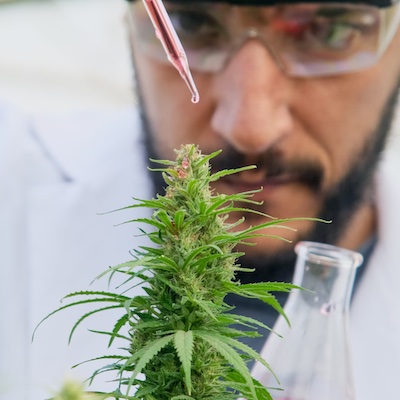
What would the new Swiss legal scenario look like?
- Cannabis will remain classified as a narcotic (unlike in Germany, where it was removed from this category).
- Adults may grow up to three marijuana plants, and possession of cannabis will also be permitted (although the quantities have not yet been specified).
- Cannabis will be sold under a state monopoly, through a limited number of licensed retailers.
- Vertical integration will not be allowed – meaning that the same company won’t be able to grow and then sell cannabis.
- Sales will be non-profitable, and the proceeds will be used for the prevention and reduction of risks associated with cannabis use.
- Taxes levied on cannabis products will vary according to their THC content and the method of consumption.
- A digital tracking system will be implemented throughout the supply chain, based on the model from the pilot projects.
Implications of the Swiss model and next steps
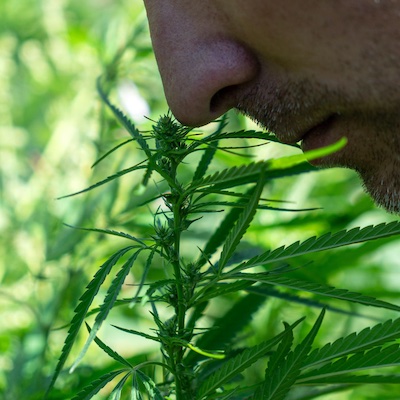
Implications for the European legal framework

Top 5 cannabis varieties of 2025 with the highest THC count
The five marijuana seeds with the highest THC levels this season
Permanent marker: an effect that you won’t forget
White Truffle: out-of-this-world potency that’s accessible to all growers
Auto Apple Fritter: autoflowering speed, exorbitant psychoactivity
- Premium aroma: A sweet taste of freshly baked apple with spicy touches and notes of vanilla.
- A powerful effect that is cerebral to start with, followed by feelings of euphoria and joy which gradually turn into pleasant physical relaxation.
- Short life cycle: This autoflowering strain is ready for harvest in just 9 - 10 weeks (from germination to harvest).
- Incredibly easy to grow – with just a little TLC, she can produce generous yields of up to 600 g per square metre indoors, and up to 250 g per plant outdoors.
Cheese Ghost Train: reinventing the most famous cheese flavour
Oreoz: the flavour that has taken the West Coast by storm

Pilot programmes for the sale of cannabis in Germany
What are the pilot cannabis sales programmes?
What is the current status of the programme?
How will this be influenced by the early elections in Germany?

New evidence reveals that CBD and THC don’t interact as we previously thought
What does the latest research say about the CBD-THC interaction?
Other studies that reinforce the imbalance hypothesis
Implications for therapeutic and recreational use of CBD

Top 5 best-selling cannabis strains of 2024
Which are the best-selling marijuana seeds?
Oreoz: for those who want it all
Oreoz is perfect for you if…
- You have a high tolerance to THC and are looking for a strong experience.
- You want to get maximum yields without sacrificing the quality of your flowers.
- You’re a fan of the American "cookies" flavours. We have designed this variety thinking of those with a sweet tooth – no doubt they’ll be over the moon with her chocolate and nutty flavour topped with diesel notes.
Amnesia Haze: a classic never dies
Amnesia Haze is ideal for you if…
- You’re a true lover of Haze genetics and want to try an old school queen.
- You enjoy sativa effects.
- You’re looking for an out-of-this-world yield and have the space to house large plants.
Apple Fritter: a flavour that creates followers
Apple Fritter is for you if…
- You have a good tolerance to the effects of THC and are looking for strong sensations.
- You love trying original and complex cannabis flavours that surprise you.
- You enjoy the quality of American strains.
Auto Gorilla Zkittlez: potency and flavour in autoflowering format
Auto Gorilla Zkittlez is for you if…
- You want quality harvests in record time.
- You’re looking for a robust and productive auto that is a safe bet.
- You’re a fan of premium American flavours.
Strawberry Haze Auto: a strawberry aroma that’s hard to forget
Strawberry Haze Auto is for you if…

This is how pilot cannabis sales programmes work in the Netherlands and Switzerland
The Netherlands: modernising the “coffee shop” approach
Switzerland: “Weed Care” and innovation in cannabis policy
Trend towards lower-risk forms of consumption

Black Friday: our best seeds with a 50 % discount!
Get the best indoor strains on Black Friday
Black Friday is here, bringing you a unique opportunity to purchase some of our most sought-after genetics at an unbeatable price. This year, you can find varieties that not only stand out for their unmatched quality, power, and personality, but also for their high adaptability and performance in controlled environments. These are perfect for both expert growers and for those looking to get started in the noble art of cannabis growing with the best products on the market. Make this indoor season unique by taking advantage of our Black Friday promo!
Oreoz: a cannabis dessert that delights the senses
Not all cannabis varieties are born to become legends, but Oreoz certainly arrived on the scene to occupy a special place in our genetic library. This strain pays tribute to the iconic cookies but is much more than just an attractive name. She’s a true delicacy that delivers a rich and complex experience, combining great flavour, high potency, and a unique genetic lineage which is the result of the union between Cookies and Cream and Secret Weapon – two strains that stand out for their high trichome production and intoxicating aromas. The result is a flower covered in resin that shines like a jewel, with THC levels ranging between 20 and 30 %, and leaves that are initially dark green and then take on purple and black hues during the flowering, making her appearance even more attractive. But Oreoz’s true charm comes from her flavour – a combination of dark chocolate, acidic citrus fruits, walnuts, and a touch of spicy diesel. Perfect for those who like exotic desserts and enjoy an experience dominated by deep and lasting relaxation, which is the reason why she’s a popular choice for evening sessions. More than just a simple strain, Oreoz is an invitation to enjoy cannabis with all your senses.
Apple Fritter: the sweet secret of nostalgia
They say the best things in life are unexpected, and Apple Fritter is the perfect example of this… She’s a smart choice for those looking for something out of the ordinary. This strain, born from the cross of Sour Apple and Animal Cookies, and whose name evokes the irresistible aroma of freshly baked apple fritters, has transcended her multi-award-winning reputation to become a true cannabis icon. But what makes her so incredibly irresistible? The answer is not only based on her potency (her THC count can exceed 30 %) but also on the overall experience that she delivers. Just imagine this: You’re at the end of a long day, looking for a moment to switch off, and all you need is something to transport you. Apple Fritter is a passport to that moment of serenity. Every puff wraps you in a warm and comforting feeling, as if you were entering a kitchen where the aroma of sweet dough and caramelised apples floats in the air. This isn’t just any trip: it’s an encounter with nostalgia and well-being. That’s why you should try Apple Fritter. Because she’s not only a strain but an invitation to explore the extraordinary things in everyday life and to savour life with a touch of sweetness. Once you do it, you’ll understand why everybody’s talking about this beauty.
Amnesia Haze: the epicentre of cannabis excellence
There are cannabis strains that simply do what you’d expect from them, and then there’s Amnesia Haze – a true masterpiece that takes the cannabis experience to another level. This legendary strain not only offers a sensory adventure that has conquered hearts and minds all over the world, but she also redefines what it means to enjoy cannabis. All thanks to a sativa-dominant hybrid born from a mix of ancestral genetics from Southeast Asia, Jamaica, and Afghanistan - a perfect balance between the classic and the contemporary. But why is she so special? It all starts with her unmistakable aroma, an explosion of bright citrus fruits with earthy and spicy touches, as if nature itself invited you to explore a tropical forest after a storm. Her fragrance is just the prelude to an even deeper experience thanks to her ability to boost creativity and lift the spirits, making her the ideal companion for those seeking inspiration. Her looks are also worth admiring: compact and dense flowers covered with shiny trichomes that reflect the quality of her genetics. Amnesia Haze is not just any old strain… She’s a statement of intent, a trip you won’t forget... or perhaps you will, but certainly with a smile on your face.
Alien OG: a strain to look at the stars
Alien OG is one of those strains that seem to have been sent from outer space to redefine the way we understand quality. This indica-dominant gem has roots that go back to the iconic cross between the exotic Tahoe OG and the enigmatic Alien Kush, two genetics revered for their high potency and unique aromatic profile. And the result of this? A strain that is not only potent but also fascinating, ideal for those looking for something out of the ordinary. From the very first glance, the extraterrestrial appearance of Alien OG captivates you, with its compact buds coated in a dense layer of crystalline trichomes that shine like stardust. Her aroma is another of her strengths: an intense mix of fresh lemon, pine, and moist earth, which anticipates a flavour profile dominated by vibrant citrus notes that are intertwined with spicy nuances, leaving a delicious and persistent aftertaste. But what really puts Alien OG in orbit is her effects – a perfect balance between deep relaxation and an initial burst of cerebral euphoria that is ideal for those creative moments when you need to unleash your imagination. With THC levels that can exceed 25 %, she’s certainly not for beginners; but if you’re looking for something that transports you to another dimension, Alien OG is definitely the answer.
Tropicanna Cookies: a ticket to the unexpected
Some cannabis strains like to follow a safe path, but others like Tropicanna Cookies glide down the rails of the unusual, inviting you on a journey that redefines the extraordinary. This unique variety combines two completely opposite worlds, fusing Girl Scout Cookies’ robustness and funky character with the psychoactive intensity of a Tangie. The result is a collision that surprises, challenges, and, above all, fascinates. From the moment you come across her, you know that you’re in the presence of something special that fully intends to be noticed: her explosive aroma is a symphony that blends the piercing perfume of cured cheese with a sweet background reminiscent of tropical fruits that awakens your curiosity. But what really stands out about Tropicanna Cookies is her ability to adapt to your needs. Her THC levels, which can exceed 22 %, guarantee a respectable potency without becoming overwhelming, which is ideal for switching off without losing that spark that keeps you connected to the present. In terms of cultivation, the resilience of this strain shines through, with a relatively short flowering period for a variety with this level of complexity, which makes her an attractive option for those looking for high quality without the long wait. So don’t wait any longer: hop on board a train you definitely don’t want to miss, and discover why this strain has become one of the most intriguing in today’s cannabis scene.

The latest technology in cannabis cultivation
The cannabis industry is experiencing an exciting evolution as technological innovations transform the sector, with growers increasingly turning to advanced solutions to improve efficiency, yielding capacity, and crop quality. The key players of this transformation are automation and artificial intelligence (AI), but they’re certainly not the only protagonists. Let’s explore the innovations that are destined to revolutionise the world of cannabis growing!
Agriculture has always been an intensely technological field that has driven innovation since the Neolithic revolution more than 10,000 years ago. Likewise, the world of cannabis cultivation is now on the verge of a profound metamorphosis, driven by the control of machine learning, which will redefine our understanding of agriculture, genetics, and even nature itself. At the heart of this revolution is undoubtedly artificial intelligence (AI), which acts as a sentinel overseeing every stage of production. With its algorithms, AI will be able to analyse and optimise all aspects of cultivation, from seed to sale, turning data into a powerful tool to refine processes, predict trends, and drive profitability. But regulatory changes, such as those in the US or Germany, are also creating the ideal environment for further innovation, opening the floodgates to technology investment, experimentation, and the adoption of new and advanced cultivation and post-harvest practices. Let’s now analyse what advances will take this plant to new levels of sophistication.
Precision agriculture: the future of cultivation involves IoT sensors
Precision agriculture helps optimise environmental conditions such as light, humidity, and temperature in real time, thanks to intelligent sensors which are becoming more and more affordable and versatile. These sensors constantly monitor and adjust these conditions to ensure that each plant receives exactly what it needs at any given time. The result? Higher yields, better quality, and more consistent products; all achieved with minimal human intervention. Automated cultivation systems are another key trend. They include vertical growing facilities based on hydroponics or aeroponics which maximise the use of space by stacking plants in multiple layers. What’s more, these setups can deliver even greater benefits when combined with next-generation LED systems and robotics, which are already taking over the dangerous, boring, and repetitive tasks of cultivation (for example, harvesting), thereby increasing efficiency and reducing the need for manpower.
Hyperspectral imaging and 3D scanning to monitor cannabis health
AI-powered systems can also detect subtle changes in plant health before they are visible to the human eye. By using hyperspectral image recognition at different wavelengths (which allows the analysis of cannabis down to a molecular level) and 3D scanning (to monitor plant structural growth), accurate real-time models can be developed to help identify signs of stress, nutrient deficiencies, or disease through predictive analysis. Machine learning algorithms can also analyse historical weather data to predict the likelihood of pest infestations or fungal diseases. Even drones equipped with advanced sensors can monitor from above, providing real-time data. Early detection allows growers to rapidly take corrective action, avoiding widespread crop damage and ensuring the development of healthy plants with higher levels of cannabinoids.
Integration of nanotechnology applied to irrigation
Smart drip irrigation systems can accurately deliver water and nutrients directly to the roots, based on actual soil moisture levels and real-time weather conditions. This helps reduce water use by avoiding runoff and keeps the plants healthy and highly productive. The use of nanobubbles also significantly improves the ability of the roots to absorb oxygen, resulting in healthier, stronger, and hardier plants. Nanofertilisers, for instance, release nutrients in a controlled manner, which helps optimise absorption and minimise soil contamination. On the other hand, silver and copper nanoparticles, or polymer nanocapsules that release pesticides in a controlled way, have very specific applications in pest and disease control. They may help lead to more sustainable and high-yielding cannabis growing practices in the future.
Bioreactors and cryogenic pasteurisation: redefining cannabis production
One of the most intriguing technological advances is that of bioreactors, which enable the production of cannabinoids without having to grow Cannabis sativa plants. By using genetically modified yeast, bioreactors can synthesise cannabinoids on a large scale. This could revolutionise cannabis production by offering a scalable and less regulated alternative to traditional cultivation, which would in turn significantly reduce its environmental impact, lower production costs, and make cannabis more accessible. The innovative technology of cryogenic pasteurisation also addresses one of the most pressing problems in the industry: microbial contamination. In a market valued at billions of euros, this is a critical issue to maintain product quality whilst managing complex regulatory barriers. This technique combines cryogenic steam, using liquid nitrogen, with a disinfection process that brings the product to very low temperatures in a short period. This helps destroy pathogens while preserving the active compounds of cannabis (such as cannabinoids and terpenes), retaining both its potency and aromatic profile.
High-performance phenotyping: the new frontier of genetics
But there can be no evolution in cultivation without good genetics to support it. While seeds and cuttings have long been the pillars of cannabis strains, tissue cultivation stands out as the future to help preserve the desired characteristics of each variety, protecting against pathogens and maintaining a more reliable and accessible gene bank. It is a propagation technique that involves the cultivation and maintenance of plant cells, tissues, or organs under aseptic conditions in a nutritious growing medium, usually in Petri dishes. This method enables the indefinite storage of a large number of seedlings or genes, all in a minimum space. It also helps ‘clean’ the genetics by propagating only the necessary cells, leaving behind unwanted pathogens such as hop latent viroid (HLVd), which is one of the riders of the current cannabis apocalypse. But if we combine tissue culture with genetic editing and improvement technologies, we gain unprecedented control over the genetic makeup of a plant. One of the most powerful tools is CRISPR-Cas9, a pair of molecular scissors that acts as a versatile and precise gene editing system. This enables scientists to modify specific genes with millimetric precision, to achieve desirable features faster than ever before. The future possibilities of gene editing in cannabis cultivation are truly exciting. With the potential to create unique and specialised strains, breeders can now explore new combinations of cannabinoids and terpenes, offering consumers an even wider range of experiences with cannabis, which can take this plant to levels of evolution never seen before.

Medical Cannabis or Cannabis Clubs
